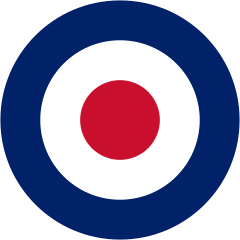
Halifax bomber shot down by German night fighter on July 25, 1943.
Stationed at Snaith airfield, Yorkshire, England
The Air Force
On the night between July 24 and 25, 1943, the Royal Air Force sent an air force of 791 bombers with the aim of bombing Hamburg.
The air force was dispatched from bases in England and consisted of:
347 Avro Lancaster
246 Handley Page Halifax
125 Short Stirling
73 Vickers Wellington
It was the first bombing raid under Operation Gomorrah, which aimed to target bombing targets in Hamburg.
Operation Gomorrah continued into August
12 aircraft were lost that night – 1.5% of the force.
Two Rescued from the Plane
One of these aircraft was Halifax Mk. II, with serial number HR 940. The aircraft got lost from the large formation of aircraft – on its way to the bombing target Hamburg – and was an easy target for the German night fighters.
Radar station “Ameise” near Aabenraa detected the lone bomber and Oberleut-nant Günter Köberich, Feldwebel Walter Kramel, and Feldwebel Walter Heidenreich in a night fighter of the type Junker JU 88G were sent off and directed close to the bomber. Oberleutnant Köberich flew under the bomber from behind and set it on fire. This shoot-down took place over Als, and the English Halifax ended up burning in the terrain north of Hestehavegård.
On board the aircraft were the entire 7-man crew as well as the bomb load consisting of 6 explosive bombs and incendiary bombs. The rescue team quickly arrived at the crash site – including fruit grower Jørgen Petersen, police from Sønderborg, and personnel from the German garrison in the town.
Fruit grower Jørgen Petersen, who was the first to arrive, managed to rescue two of the crew members from the burning aircraft:
- Sergeant T. McLauchlin
- Sergeant R.E. Livermore
The Bombs Detonate
They were immediately taken to the county hospital in Sønderborg, where they were cared for by nurse Louise Mathiessen. However, they later died from their injuries and burns.
The crew on the scene was just about to pull more crew members out of the plane when two bombs detonated with a violent force that completely destroyed the plane, killing the rest of the crew.
A German non-commissioned officer who was near the plane was also killed.
The English crew is buried in the cemetery at Åbenrå.
That night only 12 bombers were lost, compared to the usual 50 to 60 aircraft out of a force of that size.
92 Million Strips
The reason for relatively few losses during this bombing raid was that the Allies used tinfoil strips – so-called Window (30 x 1.5 cm) for the first time that night to disrupt German radar installations.
These strips were thrown out from aircraft. On radar, it looked like large formations of aircraft, which either resulted in doubting the radar or attacking large “clouds” of tinfoil strips.
That night, 92 million strips – about 40 tons – were dropped.
Operation Gomorrah
Operation Gomorrah was the military codename for a series of air raids conducted by Bomber Command in the Royal Air Force and the Eighth Air Force in the USAAF from July 25 to August 3, 1943.
Hamburg was bombed, and it was until then the most violent air raid ever.
The attack was initiated by Air Marshal Arthur Harris, the commander-in-chief of the British Bomber Command.
The first wave from the Royal Air Force, which the aircraft in Arnkilsmaj was a part of, dropped 2300 tons of bombs over a large area in Hamburg.
Already in the afternoon, the next wave arrived in the form of 110 B17s that dropped 186 tons of bombs mainly over the port area.
The American B17s had difficulty finding their targets due to a lot of smoke over the city from the many fires caused by the RAF bombings at night
The Crew of the Aircraft
- Pilot: Sergeant. William John Murray
- Bomb Aimer: Sergeant. Ronald Arthur Flemming
- Navigator: Sergeant. Thomas Mc Laughlin
- Flight engineer: Sergeant. Douglas Courtney Ford
- Wireless operator: Sergeant. Reginald Ernest Livermore
- Airgunner: Sergeant. Bernard Thomas Walsh
- Airgunner: Sergeant. Harry Cousin
The Bomber
- Handley Page Halifax, crew of 7 men
- Built as a heavy bomber by Handley Page
- First flight September 24, 1939
- Introduced November 1940
- Retired 1961 by Pakistan Air Force
- Armament 8 x 7.7 mm machine guns
- Bomb load 5,900 kg
- Range 1,770 km fully loaded
- Top speed 435 km/h
- Primary users: Royal Air Force, Royal Canadian Air Force, Royal Australian Air Force, and Free French Air Force
- Produced 1940 to 1945
- Total built 6,178
- Halifax aircraft completed 82,773 sorties with RAF Bomber Command
- Dropped 224,207 tons of bombs
- 1,833 aircraft lost
The Base Where HR940 Took Off From

Snaith Airfield as it looks today. The triangular shape of the runway is clearly visible, although a motorway now runs through the area. (The photo is from 2019).
Many of the buildings still remain, including three hangars.
The three hangars are also seen at the bottom of the picture above.


Glimpses from the base during the war – Halifax bombers at Snaith Airfield
The Crash Site Then and Now

German soldiers at the crash site where one of the aircraft’s four Merlin engines lies in the crater after the violent explosion of the aircraft’s bomb load.
Many years later, almost the same place. The house in the background is Arnkilsmaj 21, which was also there back in 1943

